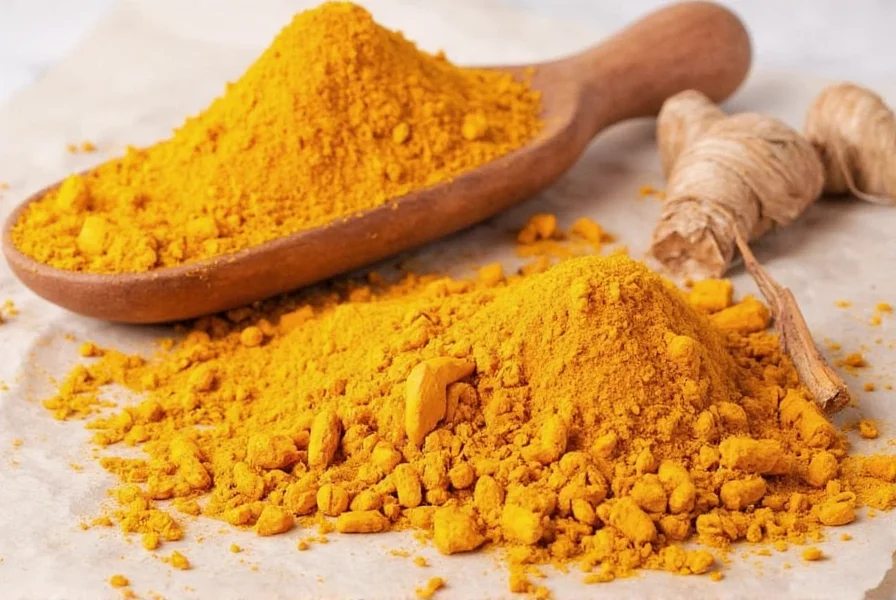For centuries, traditional medicine systems have utilized turmeric for its healing properties, particularly for inflammatory conditions. Modern science has begun validating these traditional uses, focusing primarily on curcumin—the compound responsible for turmeric's vibrant yellow color and most of its biological activity. Understanding how turmeric affects inflammation requires examining both the promising research and important limitations.
The Science Behind Turmeric's Anti-Inflammatory Properties
Curcumin works through multiple molecular pathways to reduce inflammation. Unlike many pharmaceutical anti-inflammatory drugs that target a single pathway, curcumin influences numerous biological mechanisms simultaneously. Research shows it inhibits key inflammatory enzymes like cyclooxygenase-2 (COX-2) and 5-lipoxygenase, while also suppressing the activity of nuclear factor-kappa B (NF-kB), a protein complex that plays a central role in inflammation development.
What makes curcumin particularly interesting for inflammation management is its ability to modulate the body's immune response without completely suppressing it. This balanced approach may explain why long-term turmeric use generally has fewer side effects compared to conventional anti-inflammatory medications.
Clinical Evidence: What Research Actually Shows
A comprehensive analysis of clinical trials reveals mixed but promising results regarding turmeric for inflammation. A 2022 meta-analysis published in Nutrients reviewed 18 randomized controlled trials involving over 1,500 participants with various inflammatory conditions. The analysis concluded that standardized curcumin preparations demonstrated statistically significant reductions in inflammatory markers compared to placebo, with effects comparable to some non-steroidal anti-inflammatory drugs (NSAIDs) but with better safety profiles.
| Condition Studied | Study Duration | Curcumin Dosage | Effectiveness |
|---|---|---|---|
| Osteoarthritis | 8-12 weeks | 1,000 mg/day | Significant pain reduction (comparable to ibuprofen) |
| Rheumatoid Arthritis | 8 weeks | 500 mg twice daily | Reduced joint swelling and morning stiffness |
| Post-Surgical Inflammation | 1-2 weeks | 400 mg three times daily | Faster recovery and reduced pain medication use |
| Metabolic Syndrome | 8 weeks | 80 mg/day | Modest reduction in inflammatory markers |
It's crucial to note that effectiveness varies significantly based on the specific inflammatory condition, curcumin formulation, and individual factors. Research consistently shows that standard turmeric powder has limited effectiveness due to poor absorption, while specialized formulations address this critical limitation.
Overcoming Bioavailability Challenges
The primary challenge with using turmeric for inflammation is curcumin's notoriously poor bioavailability. When consumed in standard forms, curcumin has limited absorption, rapid metabolism, and quick elimination from the body. This explains why traditional turmeric consumption often fails to produce significant anti-inflammatory effects.
Modern formulations have addressed this through several approaches:
- Liposomal curcumin: Encapsulated in fat molecules for better absorption
- Curcumin with piperine: Black pepper extract increases absorption by up to 2,000%
- Nanoparticle formulations: Reduce particle size for enhanced uptake
- Phospholipid complexes: Bind curcumin to phospholipids for improved delivery
Research published in Food Science & Nutrition demonstrated that these enhanced formulations can increase curcumin bioavailability by 5-20 times compared to standard extracts, directly translating to greater anti-inflammatory effects.
Practical Usage Guidelines for Inflammation Management
Based on current evidence, here's how to effectively use turmeric for inflammation:
Dosage Recommendations
For standardized curcumin extracts with enhanced bioavailability:
- Mild inflammation: 500 mg once or twice daily
- Moderate inflammation: 500 mg twice daily
- Significant inflammation: 750-1,000 mg twice daily
For culinary use (less effective but still beneficial): 1-3 grams of turmeric powder daily, always combined with black pepper and healthy fats to improve absorption.
Timing and Consistency
Most studies showing benefits used turmeric consistently for 8-12 weeks. Inflammation reduction typically becomes noticeable after 2-4 weeks of regular use. Taking curcumin with meals enhances absorption and reduces potential gastrointestinal side effects.
Safety Considerations and Potential Interactions
Turmeric is generally safe at recommended doses, but important considerations include:
- Blood thinning effects: Curcumin may enhance the effects of anticoagulant medications like warfarin
- Gallbladder issues: May stimulate gallbladder contraction, problematic for those with gallstones
- Iron absorption: High doses might interfere with iron metabolism
- Pregnancy: Generally safe in culinary amounts but therapeutic doses should be avoided
A 2023 safety review in Complementary Therapies in Medicine concluded that curcumin doses up to 8,000 mg daily are generally well-tolerated, though most therapeutic benefits occur at much lower doses (500-1,500 mg of enhanced curcumin daily).
Turmeric vs. Conventional Anti-Inflammatory Treatments
When considering turmeric for inflammation, it's essential to understand how it compares to conventional treatments:
- NSAIDs (like ibuprofen): Work faster for acute pain but carry risks of gastrointestinal bleeding and kidney issues with long-term use. Turmeric works more gradually but has a superior long-term safety profile.
- Corticosteroids: More potent for severe inflammation but cause significant side effects with prolonged use. Turmeric offers a gentler alternative for maintenance therapy.
- Biologics: Target specific inflammatory pathways for autoimmune conditions. Turmeric may complement but not replace these powerful medications.
Research suggests the most effective approach often combines conventional treatments with turmeric supplementation, potentially allowing for lower medication doses and reduced side effects—a strategy known as integrative inflammation management.
Realistic Expectations for Turmeric's Anti-Inflammatory Effects
Understanding what turmeric can and cannot do for inflammation is crucial:
- What works well: Managing mild to moderate chronic inflammation, supporting joint health, complementing conventional treatments
- What works moderately: Reducing exercise-induced inflammation, supporting post-surgical recovery
- What doesn't work well: Treating acute severe inflammation, replacing medications for serious autoimmune conditions
A 2021 patient survey published in Integrative Medicine Insights found that 68% of respondents using turmeric for inflammation reported noticeable benefits, but only 29% found it sufficient as a standalone treatment for moderate to severe inflammatory conditions.
Conclusion: Evidence-Based Approach to Turmeric for Inflammation
The scientific evidence supporting turmeric for inflammation is substantial but nuanced. Standard turmeric has limited effectiveness due to poor bioavailability, while enhanced curcumin formulations demonstrate measurable anti-inflammatory benefits for various conditions. For optimal results, choose standardized extracts with proven bioavailability enhancement, maintain consistent usage for 8-12 weeks, and combine with conventional treatments when necessary for serious inflammatory conditions. Always consult with a healthcare provider before using turmeric therapeutically, especially if you have underlying health conditions or take medications.











 浙公网安备
33010002000092号
浙公网安备
33010002000092号 浙B2-20120091-4
浙B2-20120091-4